Mr. Fasik A Ahmed, HSE Trainer from Green World Group, KSA briefly explains about Work at Height Safety Training and its hazards and precautions to avoid work at height injuries; and how employers can take simple, practical measures to reduce the risk of any of their workers falling while working at height etc…
“Green World is very proud to present to your safety related topic is
work at Height”
Video Transcription
When we talk about work related to height, most of the times we are resorted to working at height due to severity of the job. Now this could be in construction, this could be in the industrial area, or it could be within a facility or workshop.So, the most important question we must ask ourselves is the work we’re doing, is it truly safe?
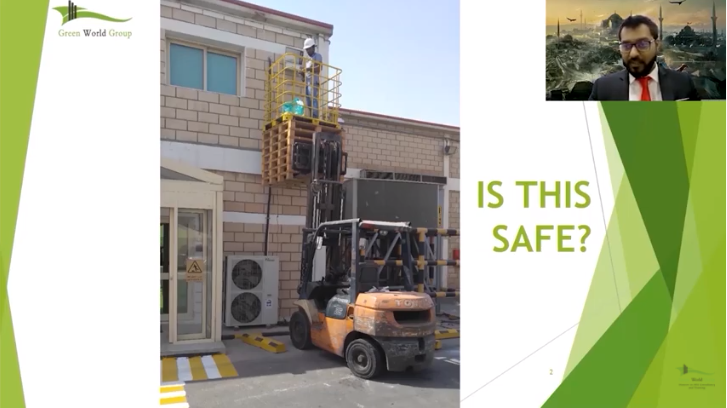
This is one of the images, I’ve personally taken, when I was conducting a few of my trainings on site. As you can see in this image, this man has created an own means of work, a temporary plum working platform. The way this is done has a lot of issues that could be raised in terms of its safety.
We don’t have the operator present for the forklift, then we have the pellets that are standing on top of the guard rail, the platform that he is working on. This isn’t the proper engineering control that we would require to grow work at such a height.
Again, we could utilize the machines that are available in the market like a mobile elevated working platforms that are much safer, or we can use a scaffolding which would take longer to build, but it would still be a lot safer than this.
The severity of this accident, could result in a lot of fatalities and a lot of injuries, not just that but a lot of property damage as well.
So, let’s talk about the “Fall statistics”
“How falls are the leading cause of death in construction industries, not just construction industries, but also when we’re working at height. Right?”
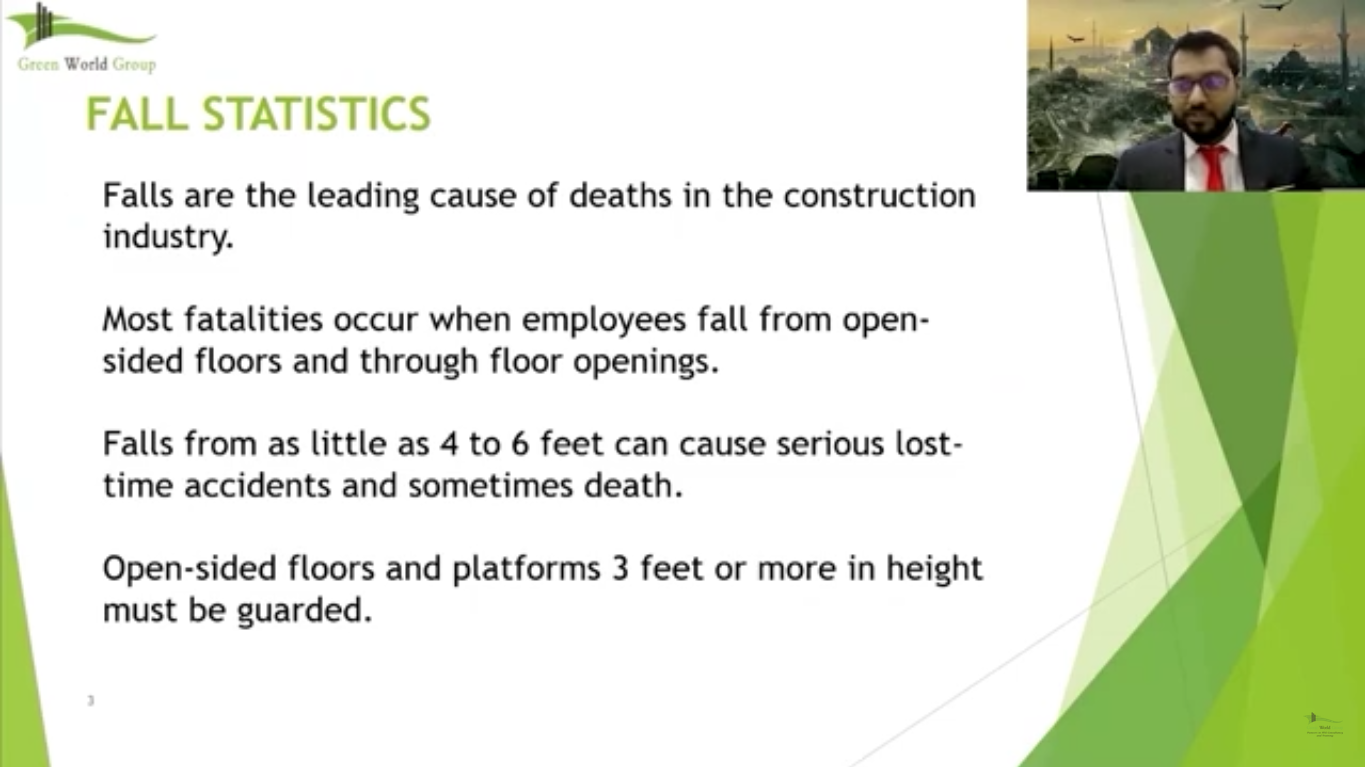
So most fatalities are curved when employees call from open side, floors or through floor openings.
I will give you a scenario where we can discuss which would be better.
So, if we take a look at the world scope of a false statistics, we have numerous amount of people who have fell through to slips or falls that have been hospitalized that would require easier medical assistance.
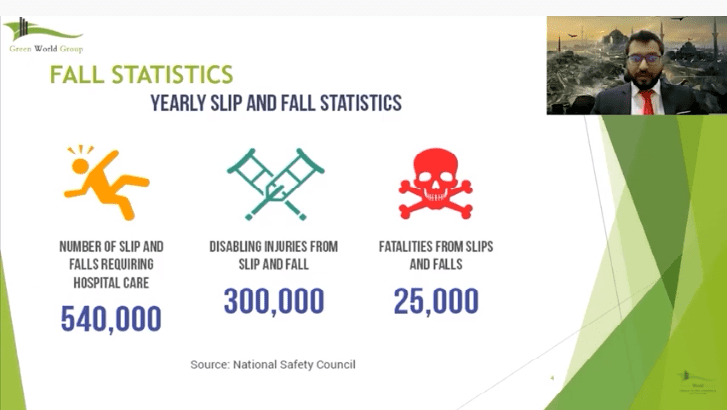
And then around the world yearly is around 5,40,000 people that end up with permanent disabilities, due to these injuries are around 3,00,000 people and fatalities from slips and falls is around 25,000 a year.
Now where’s our problem. We could provide trainings. Yes, we could raise awareness, but it all starts within us. We, the employees must understand the severity of working at height and hazards that come with it as there are, as well as risks.
So again, if we just talk about fatalities from falls, we have done statistics over, where we can categorize these, as you can see, the most amount of fatalities occurred due to working from or falling from rooftops around 37%, then comes the scaffolding, which is around 20%.
Then working at ladders,
Either the quality of the ladder or the way the ladder set up, can result towards falling from the height. And then we talking about structural skier, so steals which is around 9% and so on. But let’s define fall protection.
What is fall?
A series of reasonable steps taken to eliminate or control the injuries, effects of the unintentional fall while assessing the work at height.
But there are different types of falls that we must consider obviously, i.e.
• Fall at the same level, within the surface that you might’ve fallen from
• And then there is the fall to a lower level from the height

So these could result from either stairs, ladders, platforms, loading docks and equipment, such as a mobile integrated platforms or scaffolds.
If you are working at a rooftop,
There is a major risk involved in falling from it. So you will be well-prepared, you will do the assessment and you would probably manage your safety through it.
If you were to stand on your table,
you wouldn’t think that much from it. But here’s the thing, the severity of the fall from the table is much higher than the severity of the fall from the height. Why so is because when you fall from that table, you probably land on your head where if you have a very limited time to even realize that you’re falling and boom, the impact would occur.
However, falling from the height you would still have some time to realize that you are falling there would be some self-awareness and you would try to do something to prevent.
So what I’m trying to suggest here is that despite what height we speak off, let it be just a little elevated height, there is still the possibility of falling. “So we must consider the risk of falling at any height that we work at”.
The height really does play a huge factor in terms of the impact of the severity of it. But we must not forget that there is always going to be a possibility of falling from the height.
These are questions that you must constantly ask whenever you’re working at a height so that you can be more proactive in terms of reacting towards the incident.
Now let’s quickly talk about fall protection and the system towards it
So, whenever you were assessing any source of work, we must always follow the hierarchy of controls in the full protection aspect. We must follow the same line of control however here we’re just going to add up a few more things.

First thing is to eliminate the risk altogether, but in most cases you can’t. But here, if you have to work at Height – first of all, try eliminating the factor of working from height.
Try and doing the job from the ground. If you are resulted to working at height and there’s no other way try creating a passive fall protection, like a guard rail system around the edges. Can’t do that. Don’t have the right place for that, or don’t have probably, the controls for that.
Then try implementing Fall Restraint Lanyards, which would prevent you from falling in the workplace. If it doesn’t work, then you go onto the fourth step, which is Fall Arrest System that could be an extended lanyard, or it could be a retractable lanyard or a shock absorbing that.
And finally the administrative control, which means limiting the people, who are not authorized to be there. So only trained individuals who are competent enough to work at that height.
So moving on towards the fall protection system,

we will in depth talk about the full body harness and its different features then the guard rail system. The guard rail system is an engineering control to cover up the openings within the floor and then another control system would be a safety net.
Talking about a full body harness
Yes. We’ve seen how the full body harness really looks like. But the main thing I would like to talk to you about would be the D-ring, which is found on the back. This is the connection point between your harness and your lanyard to where you will anchor yourself with.
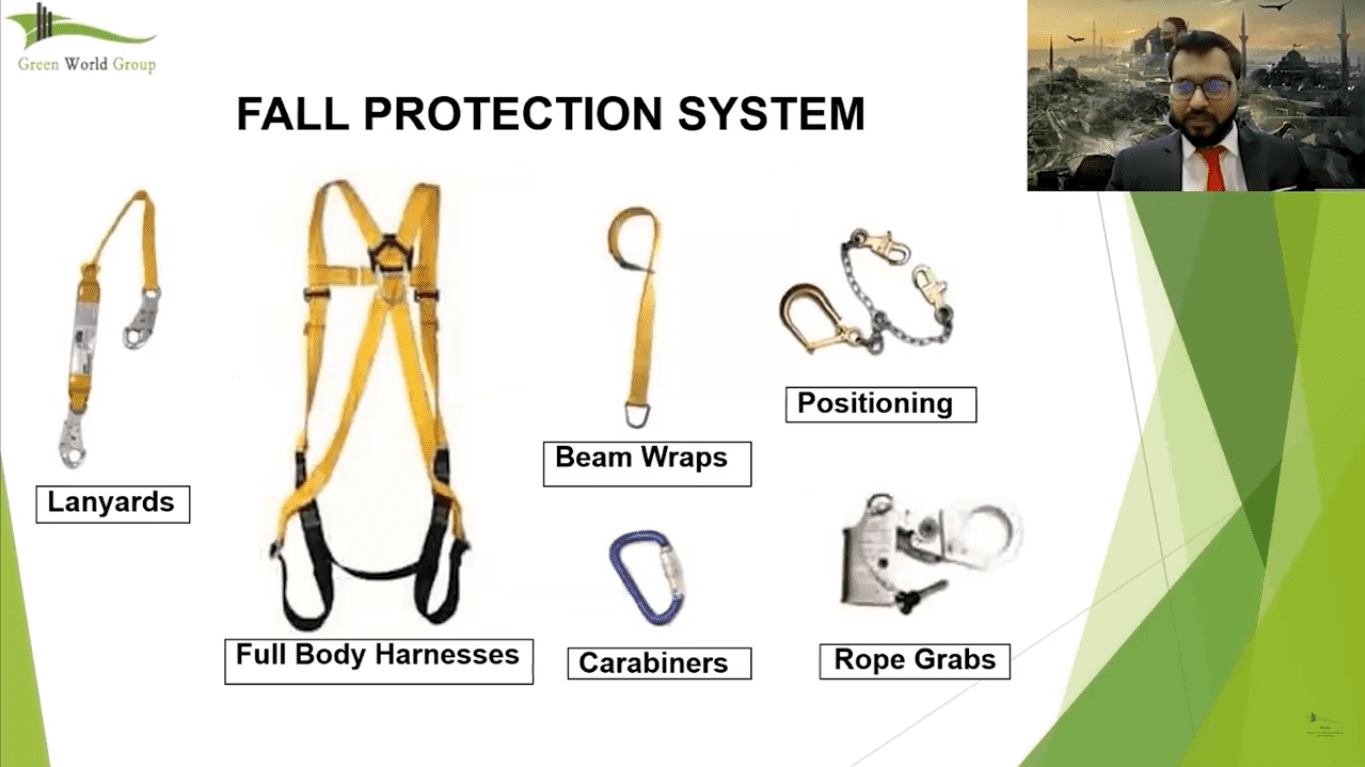
Now different parts of the full body harness, as you can see on the image, there’s a lanyard, there’s a full body harness that goes onto your body.
Minimizing the free fall distance
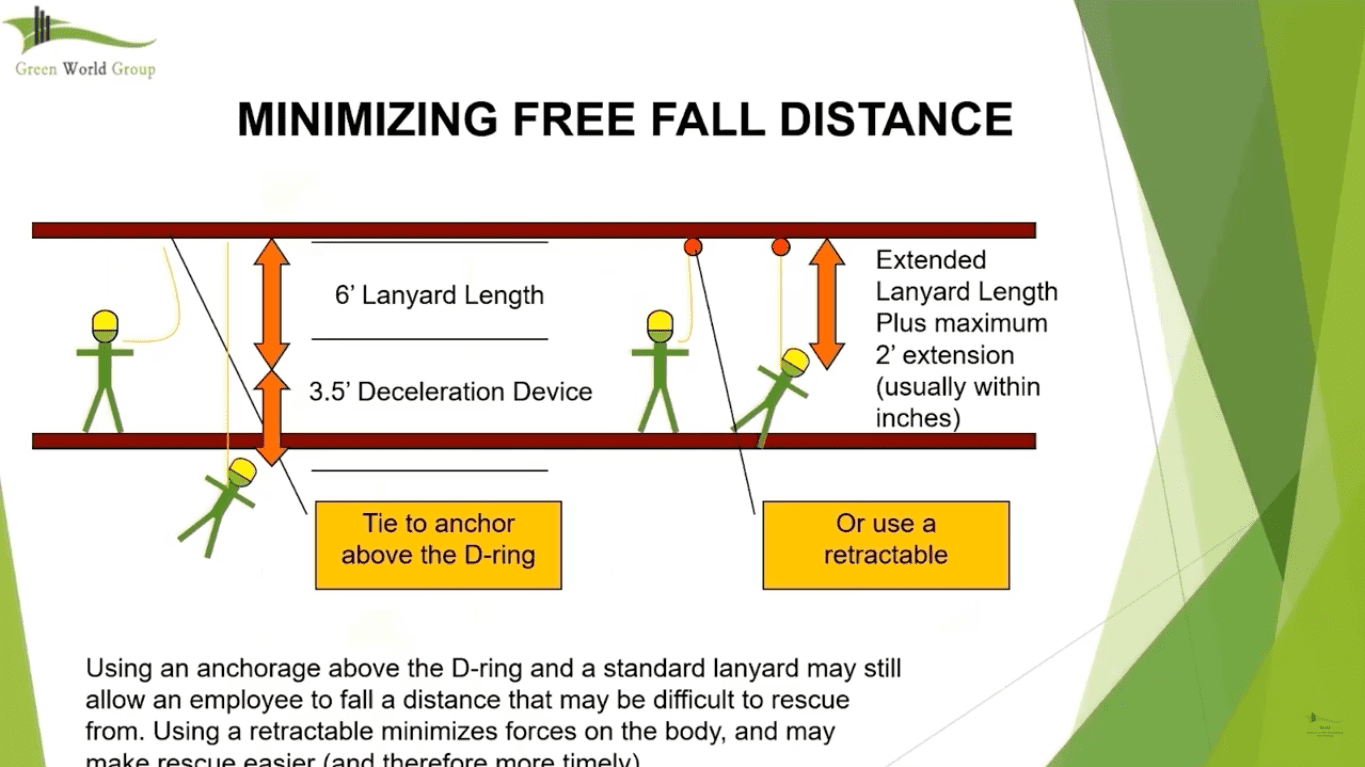
We’ve to keep in consideration what our Heights factor is and how much we’re using a lanyard that doesn’t stand and allows you a grace period to fall distance. We must keep in consideration that, what our lanyard can extend to and what our Height target is. Never forget that the anchor point must be always above your head height. So you can utilize the safe distance as much as possible.
“Whenever we were working at Heights, we all should majorly considered that if this individual does fall, what is our emergency response?”
Obviously, our emergency response shouldn’t be within less than 15 minutes so that when we can bring this individual down to safety as quickly as possible to prevent this from happening.
Let’s talk quickly about different types of control measures such as safety line and anchorage

Before I get into that, let’s talk about to where these could be tailor made to your job or they’re readily available in the market. You can have these mounted into the foundation so that it stays strong and provide you with that anchor point that you require.
“Horizontal lifelines are great for walking at Heights maybe on support beams, where you don’t have anything to hold on to. This will give you that support”

Now here’s a something about Rope grabs,
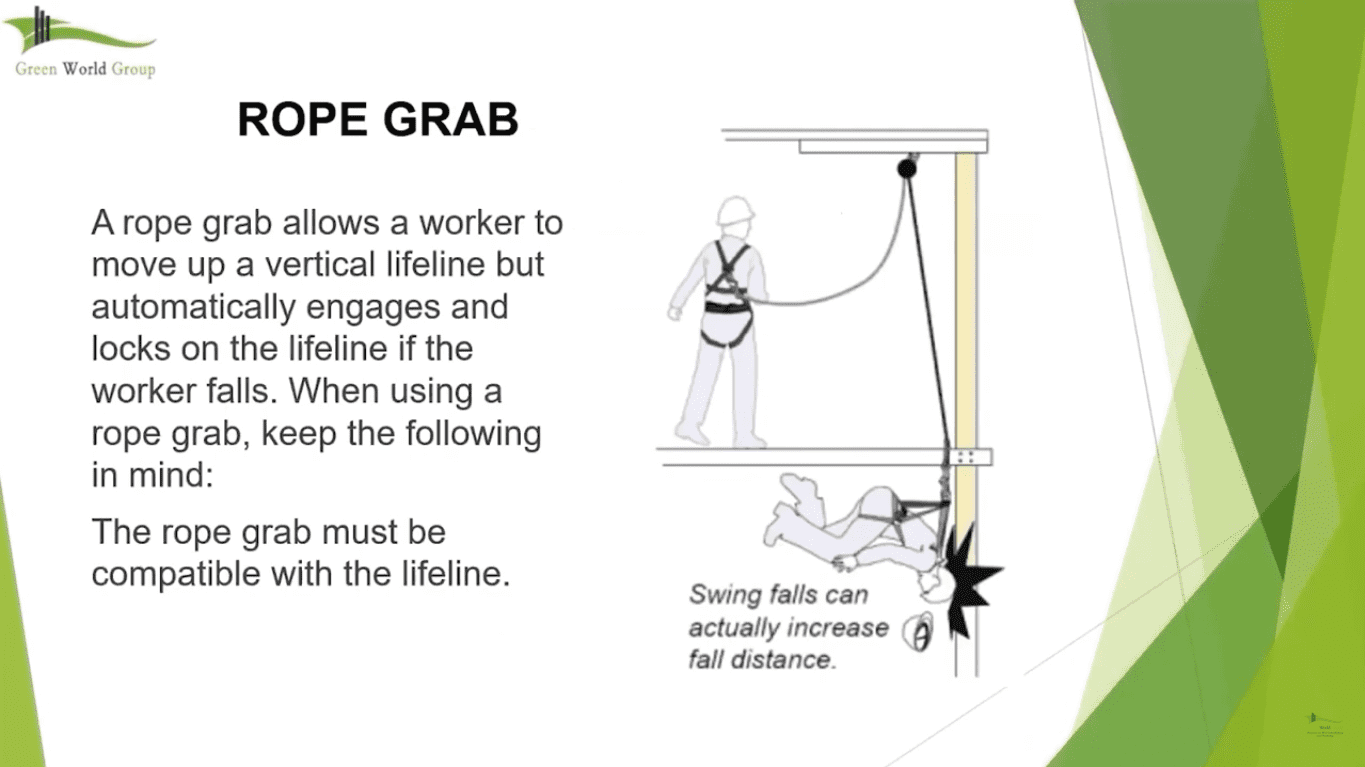
Allow the worker to move up a vertical lifeline, but automatically engages the lock on the lifeline, if the worker falls right. However, there are disadvantages to that.
So, the worker does swing into a wall or another obstacle, which could increase the severity of this drag.
More Lanyard types that we want to talk about consideration
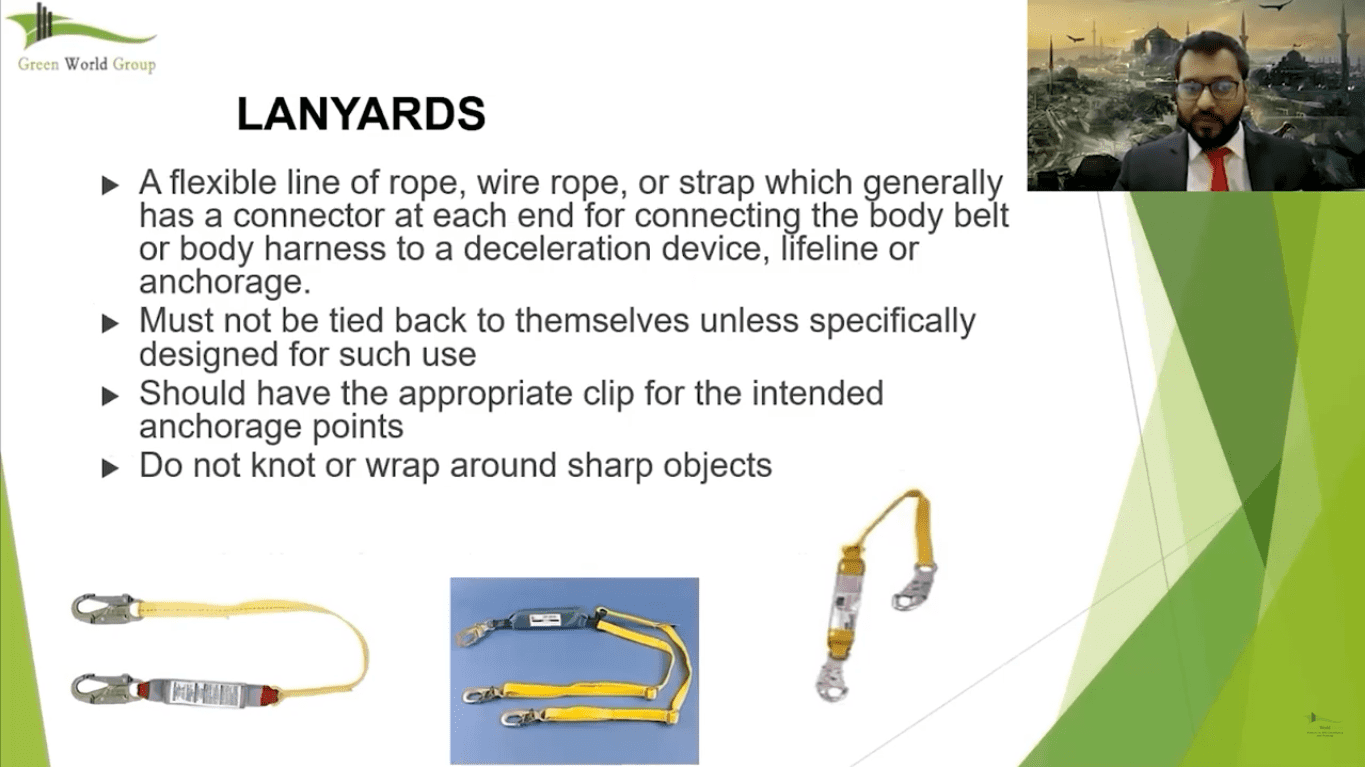
We have a single hook lanyard and we have double hook lanyards, we have retractable lanyards; These are all connections that you should consider when you are doing a very task specific job. Again, there’s many options out there in the market but you must always choose one that suits your activities or your work appropriately.
So there’s Retractable lifelines where it will decelerate,
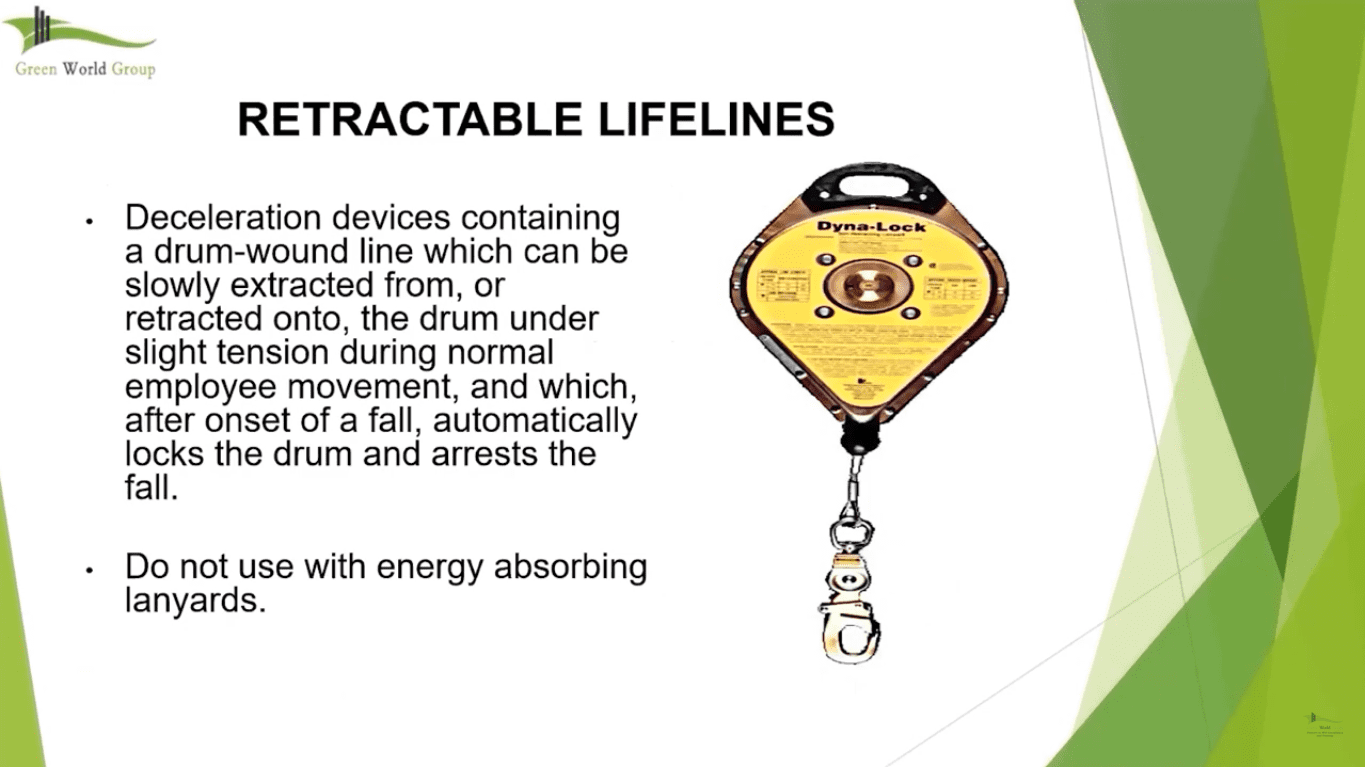
Depending on your severity of your fall or maybe a certain fall and then it could retract as soon as the closer you get to it. Then we have the fall around fall restraint lanyard, which prevents you from falling altogether towards the edge. You don’t go beyond that. We have a support cables that can be connected to or horizontal lifelines that it can be connected.
This is a major consideration we must always compare and contrast between these fall restraint, lanyard and fall arrest.
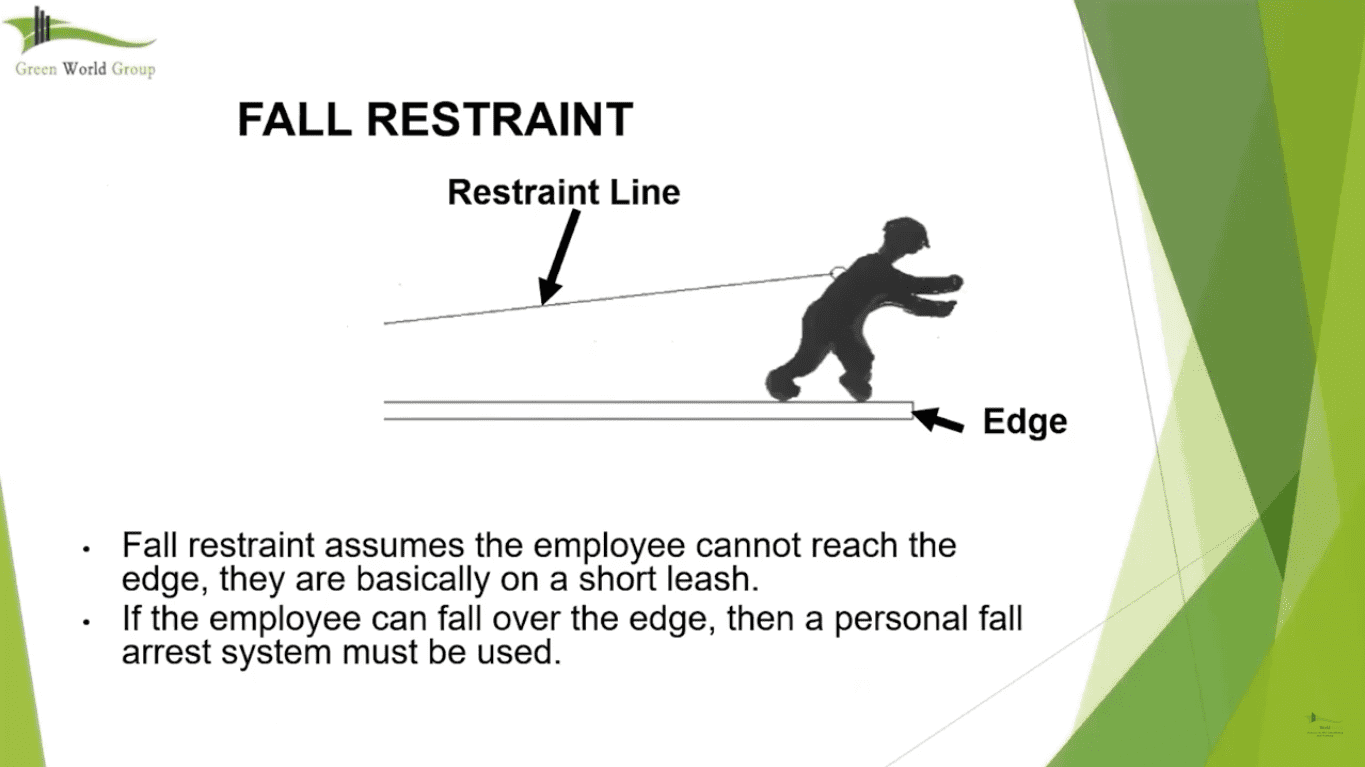
Now the fall restraint lanyard prevents you from falling altogether, limiting from that edge. Then comes the fall arrest lanyard, which allows you to fall and then stops you and hold you
Now, the reason why this needs to be differentiated is because of the line of work that you perform. Then there’s a limited leniency on your lanyard, which would prevent you from falling out of the basket altogether.

However, if you put on a full arrest, fall arrest system, lanyards, which allows you to fall, then you’d be suspended outside of the blowout of basket and you would require immediate rescue.
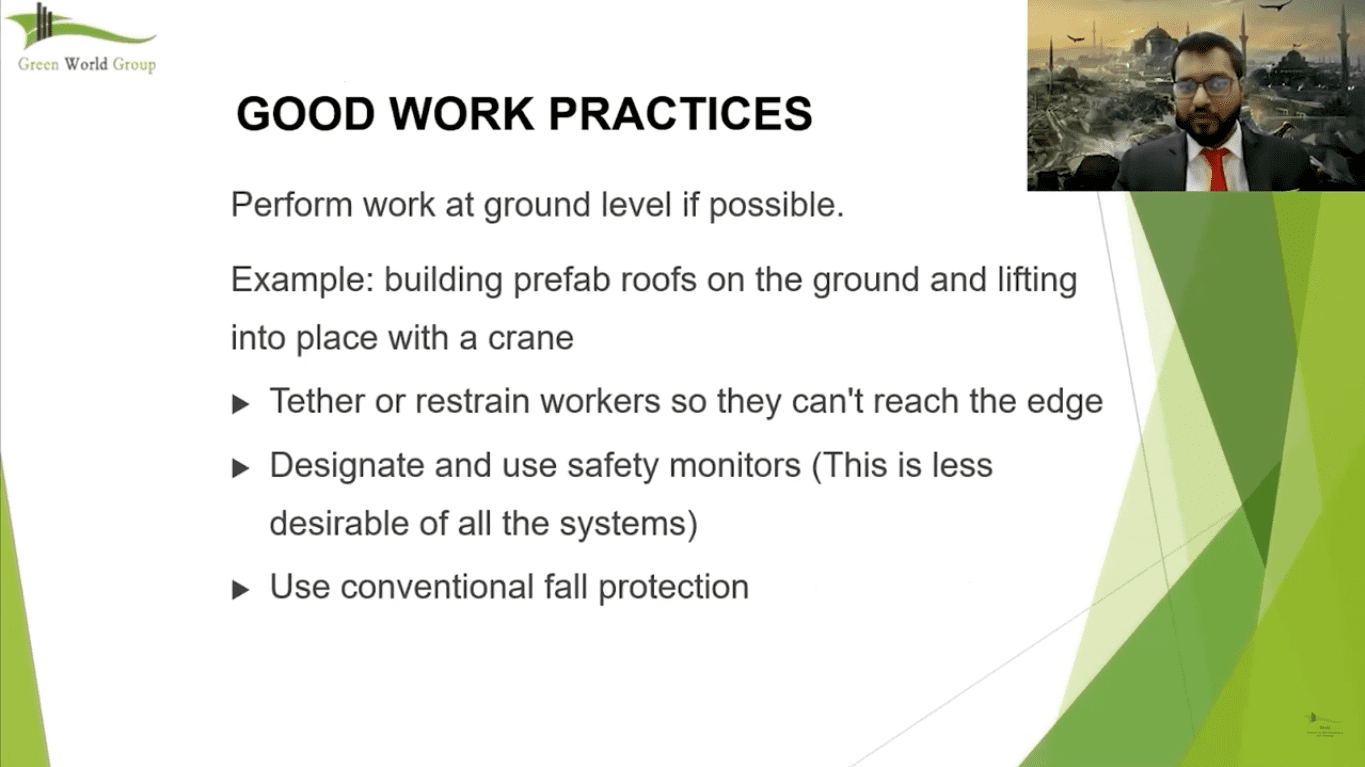
So when we’re talking about mobile elevated working platforms, it’s preferred to wear a fall restraint lanyard, because it makes more sense that way. We must perform if possible try eliminating the risk altogether by performing the job on the ground. When you’re working around edges, which I’ve already told you about, try having an engineering control around it.

And we here at Green World will provide you with that in detail. When you decided to take our course with us, with full body protection, we will train you in terms of how to recognize hazards, to task specific areas, such as scaffoldings, steel work, buildings, ladders not only that, but also mobile elevated work platforms, and so on; then how do you minimize those in those task specific areas.
But the trainings will also do cover fall hazards, fall protection systems and the use of fall protection devices, not just theoretically, but also practically, and we will be able to provide you with that. Thank you!! Signing off now.



